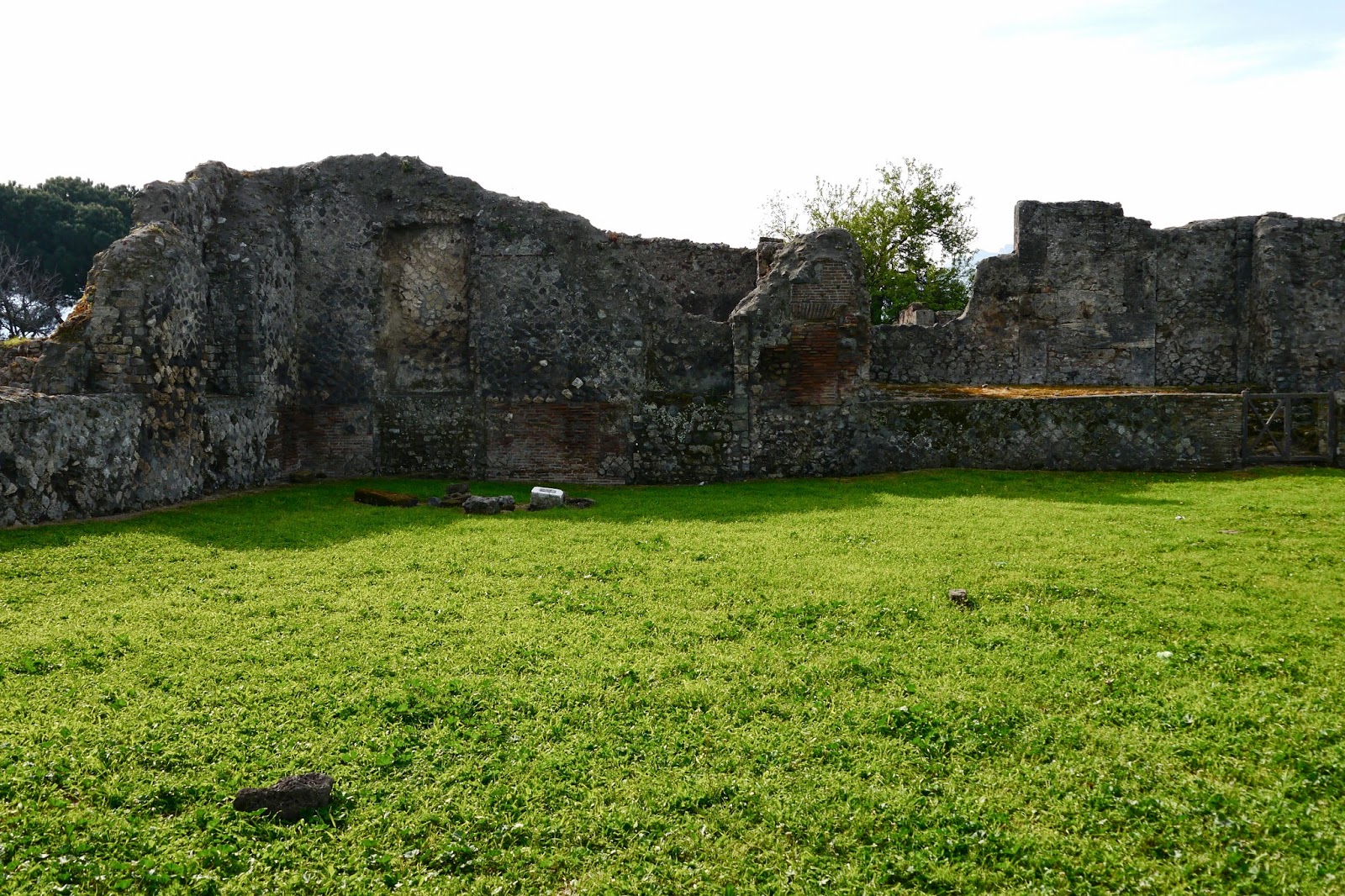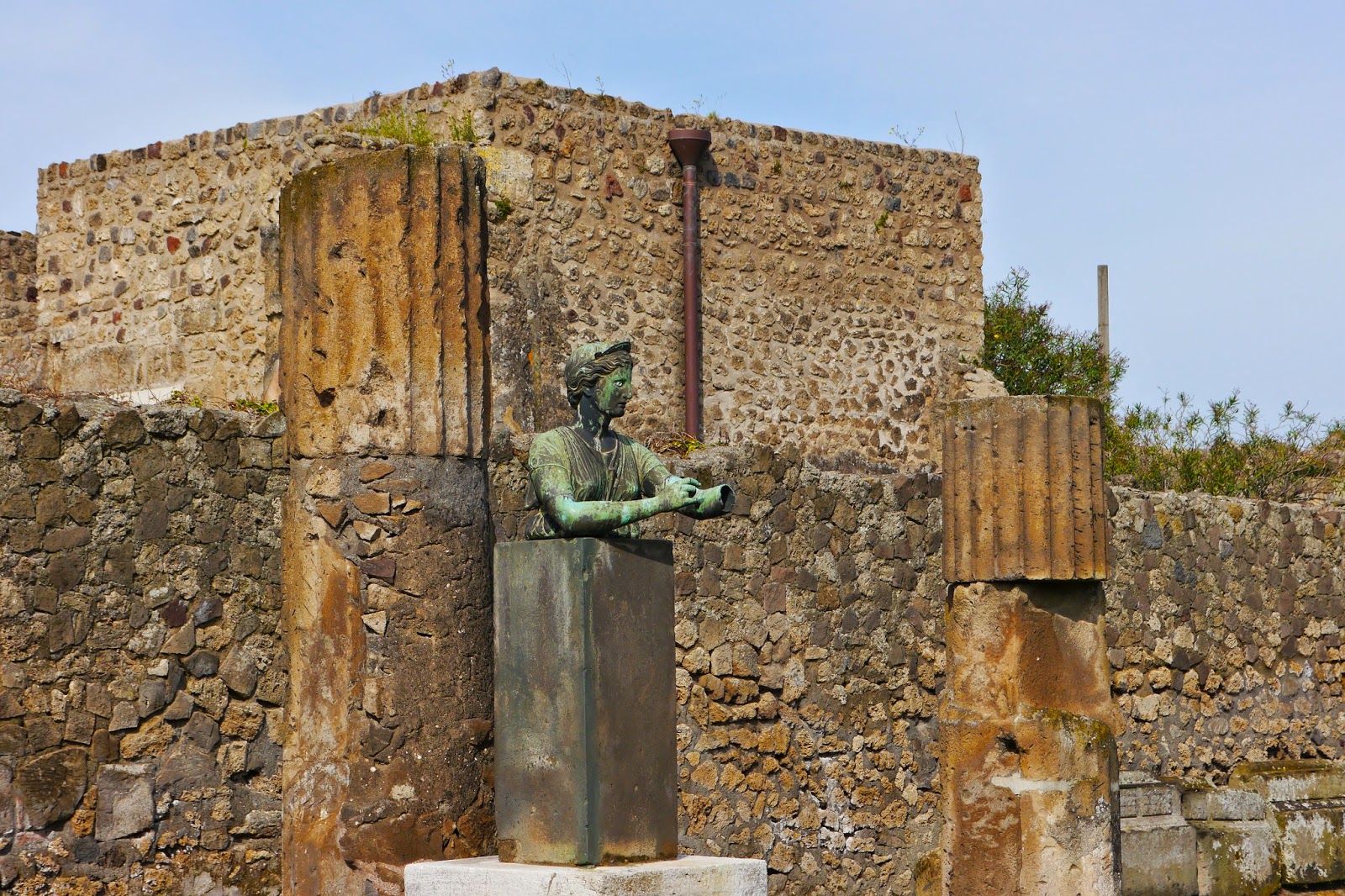There are a few places every young Humanities major dreams of: the Roman Forum, Ancient Greece, and Pompeii are some of the top highlights.
Pompeii has always fascinated my imagination. First, as a youngin' with my morbid thoughts running wild with images of flowing lava and a city buried alive. Then later, in my Classic Study of Ancient Greece & Rome course, I learned about the almost lucky (though not for the Pompeiians) preservation of the city, which has allowed historians and archeologists to better understand life during the height of the Roman Empire, and I became only more intrigued. Finally, as it can always be counted on to do, a good ol' episode of Doctor Who reminded me of the emotional turmoil and devastation that occurred in Pompeii, inadvertently spurring a sentimental attachment within me for the fallen Pompeiians.
Despite this foreknowledge, when we first arrived in Pompeii, we were greeted by a light hearted phallus-waving imp, guaranteeing that the whole day would not be caught up only in the sorrow of death, but also in the rejoice of the accomplishments of the lost people, bronze nudes included.
As well as being amazed by the city itself, I was instantly compelled to revel at the achievement of the archeologist responsible for unearthing Pompeii. The amount of work that has gone into to excavating what is still only 75% of the city is astounding.
It was hard to imagine that what I was seeing, what I was privileged to walk and frolic upon (got to love Italy, they'd never let you touch anything in America), was once buried feet and feet underground.
For me, the things I found most fascinating in Pompeii were in the details. I was pretty giddy with knowledge and fun facts (per usual). And on that note...look painting style #1!
Tour guide Kenna was delighted to inform her tour group (aka Danielle and Nicole) that this color was true Pompeiian Red. Not burgundy, not maroon, Pompeiian Red.
When we happened upon these cute cani, I was all to pleased to tell my kiddies that the first "Beware of Dog" sign was, in fact, from a Pompeiian mosaic in a foyer (Can you tell I really enjoy random quips of knowledge?).
I had been warned that Pompeii is exhaustively large. I mean, it was a whole city for criminey's sake, I should have listened. I was still somehow very unprepared for the scale.
I mentioned it was a good thing the ruins of Pompeii aren't in America, a sentiment only further enforced as we silly-ed our way through the crumbling stones. But obviously, pedestals like this are meant for posing and singing Hercules songs, so no country could really blame us for our behavior, and that's The Gospel Truth!
In my vast knowledge of historical architecture, I have learned about many types of columns: the doric, the ionic, the corinthian, and the new Kenna column, though I guess you could call her a Caryatid maiden.
"Be the column, feel the column."
Now unfortunately, we missed the technical museum of the scavi archeologici, however, we still received a vivid eyeful. Up until the point of actually seeing the cast of a human body, it is pretty easy to forget the death that is imbedded in Pompeii. With the sight of a a dead mortal and a twisted dog, this reality comes back quickly.
The reason, I feel, that it is so easy to gallivant through the city, forgetting the extinction within it, is because the evidence of an old life is just as present as the loss of it.
Fragments of homes remain, preserved. The kitchen of a home; the former life is so near.
Coming into district 6 and the House of the Fawn, I was instantly mesmerized and transported back to the Getty Villa, all the way in Malibu, CA, which is a representation of what once was the grandeur of the home of a wealthy elite from the neighboring city of Herculaneum. In the entryway of the home, though, the Getty Villa hosts a replica of the dancing fawn from which the residence we entered gained its name.
Though the structure is ever disintegrating, the small details still persevere.
Now students, what color of red is this!?
In the House of the Fawn we found two of my favorite things. First: Painting style #2. It's so simple and the detail in the teeny photos, so impressive (Indulge me while my inner humanist geeks out).
Second: a compluvium! I think my fascination with compluviums (aka that hole in the ceiling) spurs from one, that it is one of the few words I can actually remember from my lecture on the names of things in a Roman house, and second, that I really want a compluvium in my house. How cool would it be to let the rain fall through into the impluvium. I love it.
I also decided that I would like a key whole oculus over my bath tub, because why not?
Seeing the skull protruding from this sir, was definitely one of the more frightening images we saw.
With too many fretful glances at the ominous mountain, we made our departure from Pompeii.
Just looking at Vesuvius my heart thudded a little harder, imaging all the terror the threatening beast had unleashed over the millennia. I was irrationally relieved to slip back out the gates of the town, knowing my train to safety, far from the reach of the peak, was just a few minutes away. If only the Pompeiians had beens so lucky on that fateful day in 79 AD, when they tried to run to the sea, pleading their gods for mercy.
It shocks me further, that even with the knowledge of the devastation Pompeii has amassed time and time again, the citizens of modern Pompeii continue to remain in their location of imminent doom. Still, prayers are sent to a God, pleading for their safety. Human nature seems unchanging sometimes, as impeccably preserved as the remnants of a once great city. The Pompeiians, then and now, have no desire to leave the home they have made beneath a power so much greater than them. And it is with thoughts like this, that I look from the past to the future, when the day will come that today is the history learned.
Yours, Kenna































































No comments:
Post a Comment